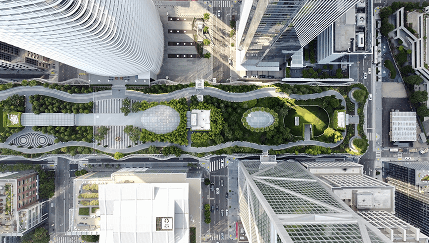Sustainable Infrastructure: Balancing Growth and Environmental Responsibility

Infrastructure is no longer judged by speed and scale alone but by sustainability. As cities grow, the challenge is to drive progress while protecting the environment, making sustainable infrastructure the cornerstone of modern urban planning.
Why Sustainability Matters in Infrastructure
The global push toward sustainability is not a trend—it is a necessity. Rising energy demands, climate change, and resource constraints are forcing cities to rethink how infrastructure is planned, designed, and built.
Sustainable infrastructure achieves a balance between:
- Economic growth – ensuring industries, trade, and communities thrive.
- Environmental protection – minimizing waste, emissions, and ecological disruption.
- Social responsibility – creating healthy, inclusive, and safe communities.
By integrating these three dimensions, infrastructure can drive progress while safeguarding the future.
Roads and Mobility: Designing Green Corridors
Transportation is a major emitter, making resilient, eco-friendly road networks vital for sustainable urban living
- Durable asphalt and recycled materials extend road life while reducing waste.
- Energy-efficient street lighting powered by solar technology lowers carbon footprints.
- Smart traffic management systems cut fuel consumption and reduce congestion.
- Green corridors and landscaping along roads absorb carbon and reduce heat.
Modern mobility planning focuses not only on efficiency but also on environmental balance, ensuring that roads become lifelines of economies and ecosystems alike.
Water Systems: Conserving the Most Vital Resource
Water security is at the heart of sustainability. Infrastructure that manages water responsibly safeguards both human life and natural ecosystems.
- Irrigation systems designed for minimal wastage keep landscapes green in arid climates.
- Recycled water pipelines reduce dependency on fresh supplies.
- Stormwater drainage systems prevent flooding and replenish groundwater reserves.
- Potable water networks ensure safe and efficient distribution with reduced leakage.
By combining efficiency with innovation, sustainable water systems secure a city’s long-term resilience.
Energy and Utility Networks: Powering with Responsibility
Electricity and communication networks are critical for modern living. But the way these systems are powered and maintained can significantly influence sustainability.
- Renewable energy integration through solar, wind, and hybrid systems.
- Smart grids that reduce power loss and improve efficiency.
- IoT-enabled utility monitoring for real-time data and predictive maintenance.
- Telecommunication infrastructure that supports remote work and reduces travel-related emissions.
Smart energy and utility planning ensures that communities are both connected and climate-conscious.
Conclusion
Sustainable infrastructure is no longer an option—it is a necessity for future-ready cities. By rethinking how we design and build, urban development can achieve a balance between economic growth, environmental protection, and social well-being. From eco-friendly roads and green mobility solutions to responsible water management and renewable-powered utility networks, each element contributes to a more resilient and inclusive future. Cities that prioritize sustainability today will not only thrive economically but also safeguard resources, protect ecosystems, and create healthier communities for generations to come.
